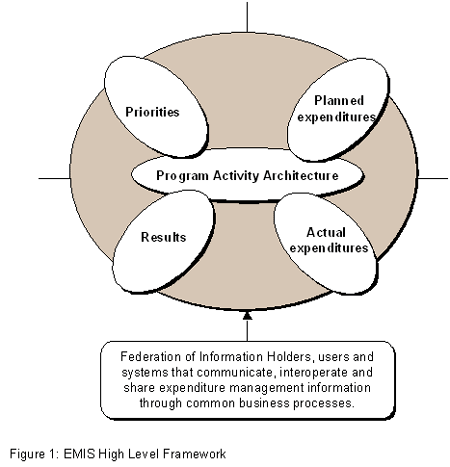
Expenditure Management Information System
|
The Expenditure Management Information System (EMIS) will be a framework of
common, government-wide business processes and information standards that will
deliver integrated financial and non-financial information from a variety of
sources. This information will be at a level of detail that will be required for
improved reporting and transparency, budget decision-making, and management of
horizontal initiatives.
|
|

The Expenditure Management Information System will focus on developing and implementing standard policies and protocols that will permit the exchange and integration of financial and non-financial information covering the wide range of government program activities (including departmental activities, and cross-government horizontal activities). This government-wide information framework will link, and more importantly, align the government’s information on priorities, planned and actual expenditures and results as demonstrated in Figure 1.
The Strategic Objectives of EMIS include:
- building government-wide capacity to exchange and integrate information on priorities, planned and actual spending, and results.
- putting in place the necessary information systems and analytical tools to support TBS’ role as a Budget Office and Management Board.
- improving the process of reporting government expenditures and results to Canadians and Parliament.
- improving the transactional relationship both between organizational elements within TBS and between TBS, Central Agencies and Departments.
Progress has been made in gathering and aligning information on departmental priorities, planned and actual expenditures, and on results as illustrated in
Figure 2.
|
